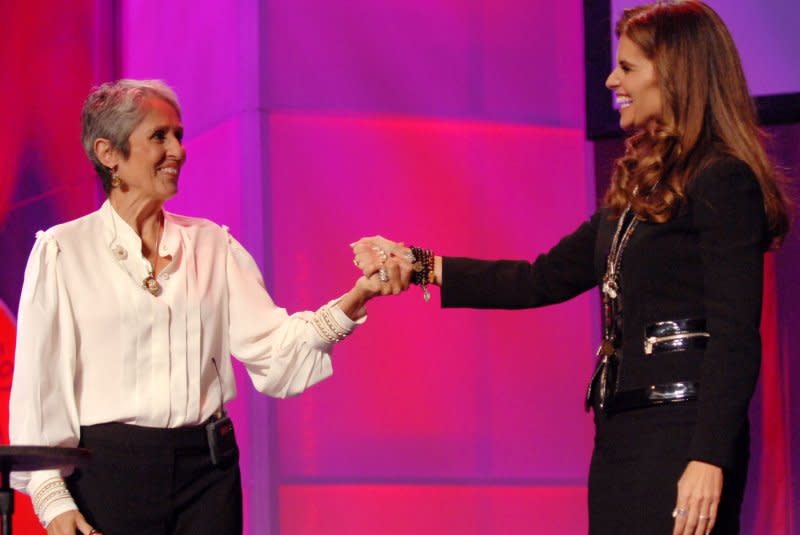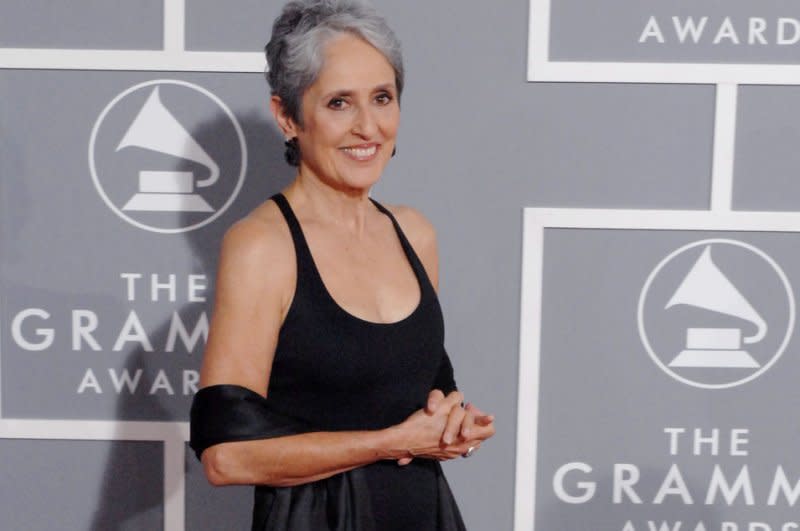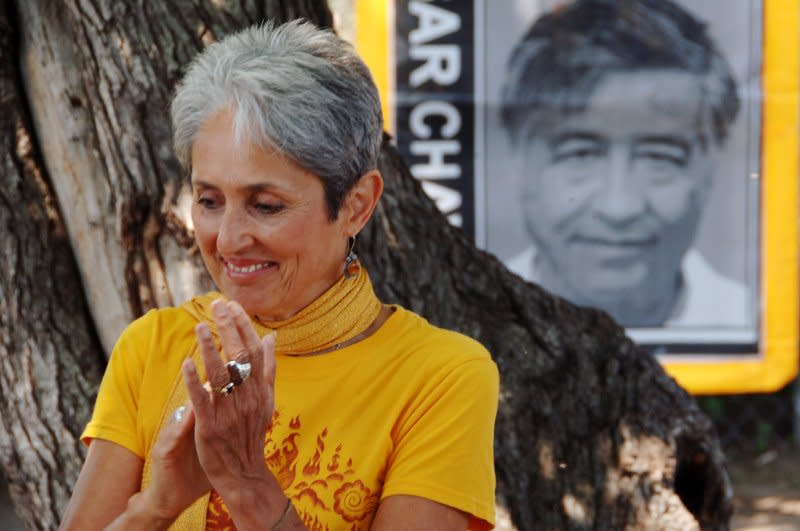Director: Documentary an intimate look at Joan Baez 'in all her complexity'

NEW YORK, Oct. 13 (UPI) -- Director Karen O'Connor says her new documentary, Joan Baez: I Am a Noise, is an attempt to humanize the larger-than-life, 1960s folk music and civil-rights icon.
Co-directed with Miri Navasky and Maeve O'Boyle, the film weaves together Baez's music, home movies, artwork, audio recordings and interviews with the subject herself to tell the fascinating story of the 82-year-old singer-songwriter's life, career and legacy.
Joan Baez: I Am a Noise is getting a wide North American theatrical release Friday.
"We had an opportunity to delve into Joan's life in an intimate and immersive way that we could show her in all of her complexity," O'Connor told UPI in a recent Zoom interview.
"We wanted to move past the presented story and discover more fully who she is and what her life has really been and to humanize her in some way. She is this legend."

O'Connor said that part of Baez's story -- and part of the film-- is discovering who the singer is.
"She's been a seeker most of her whole life and, so, the film itself is taking you on this journey," she said.

While O'Connor had known the artist for years, Navasky initially found herself a bit starstruck by Baez -- a Grammy winner, Woodstock headliner, ex-girlfriend of Bob Dylan and close friend of Martin Luther King Jr.

"I was amazed by how down-to-earth she is. She's 'Joan Baez!' And yet she's funny, she's super-comfortable with herself," Navasky said. "She's super-loving and warm and generous and very normal."
Figuring out how to organize the film was one of the biggest challenges of making it, especially considering it required picking through all the clippings, recordings, letters, diaries and mementos Baez had stashed away in a storage unit for decades.

"We started out by doing interviews with her, so we had a mix of her telling her story from now to the past," Navasky said.
"Whenever we could use the primary source material from the past, we used it," she said. "What we wanted to do was to have that as the basis and then fill in with the interviews when we needed it."
Framing the story is Baez's preparation for what she has described as her final concert tour, which ended in 2019.
"We never wanted it to be a 'historical film.' We always wanted it to have a contemporary strand, so the final tour was always going to be a narrative anchor that we could move in and out of," O'Connor said. "It is that blending of the past and the present."
The use of Baez's actual music added another personal dimension to the film.
"There was a tempo and pacing that we needed at certain times and certain songs that worked really well, and also, we wanted to bring in some of her incredible songs. So, that was another layer that worked all the way through that we worked really hard on," O'Boyle said.
The documentary shows Baez struggling to prepare for the tour and appearing disappointed that her famous voice no longer sounds the way it is best remembered.
"It will be interesting to see whether she sings again," O'Boyle said. "Her beautiful voice has changed so much and she has kind of found a comfortable space with it or she did on her final tour."
In the film, Baez explains how she feels like hers was the right voice -- literally and figuratively -- at the right time, making her a symbol of peaceful rebellion.
Her biographers agree.
"It is that 'stars aligning' [concept]. It was the beginning of the folk scene, the beginning of the counterculture," O'Connor said.
"Part of it was probably the way she looked, her voice, the anti-commercialism of the time. The kind of ethereal beauty, the otherworldly voice. There was a kind of magnetism that she had, that mystery of charisma," O'Connor said.
"I think her activism, her honesty, her authenticity has played a big part in her legacy."
Baez used her art to champion anti-war and social-justice causes "long before celebrity activism became cool" and that still resonates with people today, according to O'Connor.
"She was just in Ukraine a couple of months ago," the filmmaker said.
"She really did show up in the highs and lows of her career," O'Connor added. "She's worked her way to relevance."

 Yahoo News
Yahoo News 
